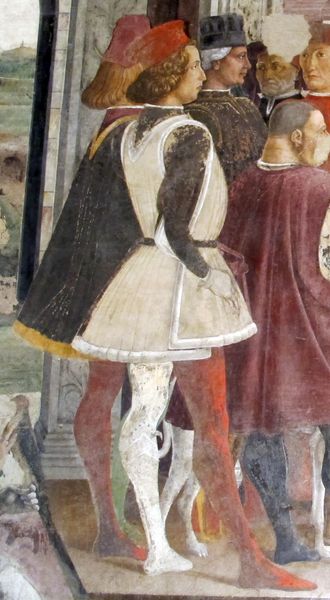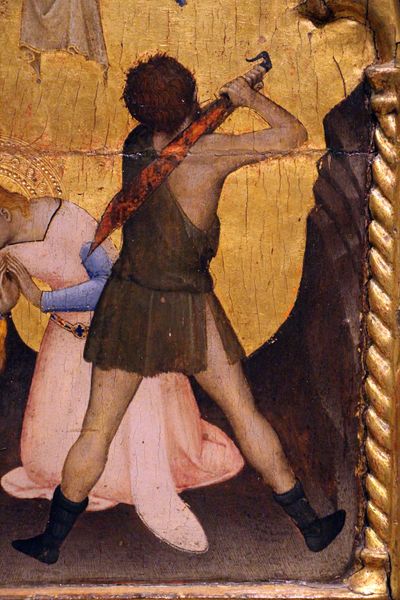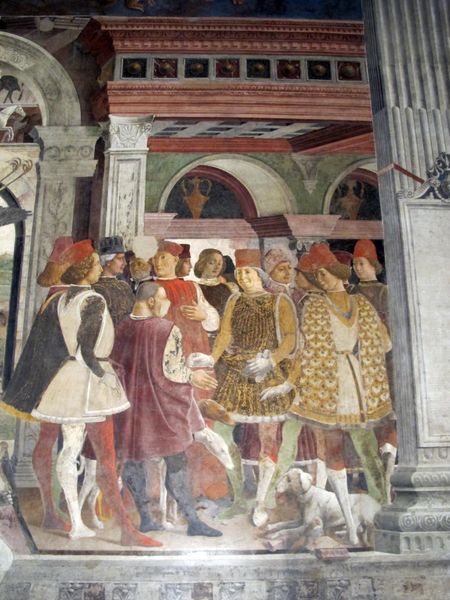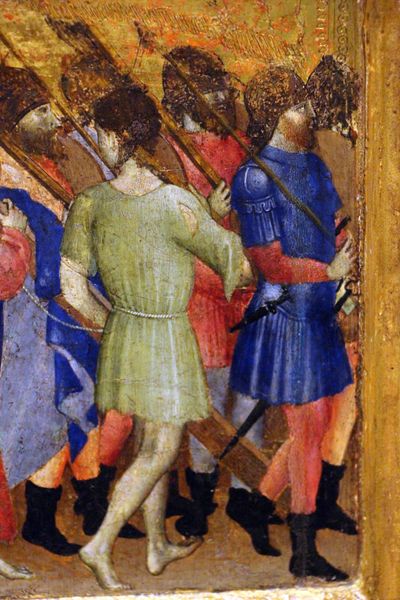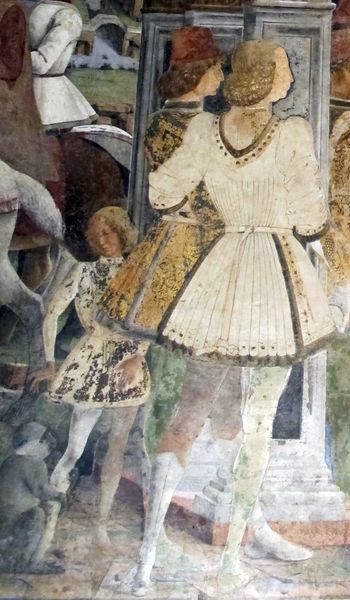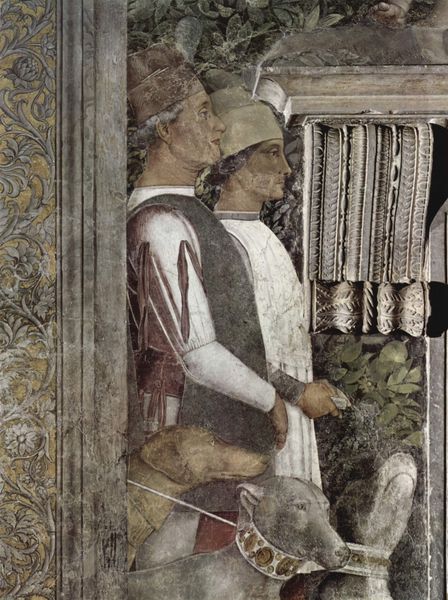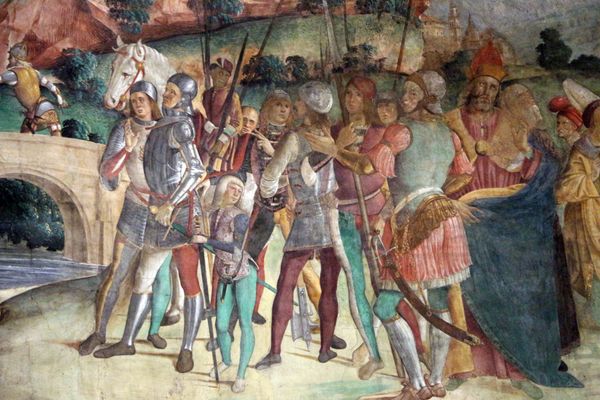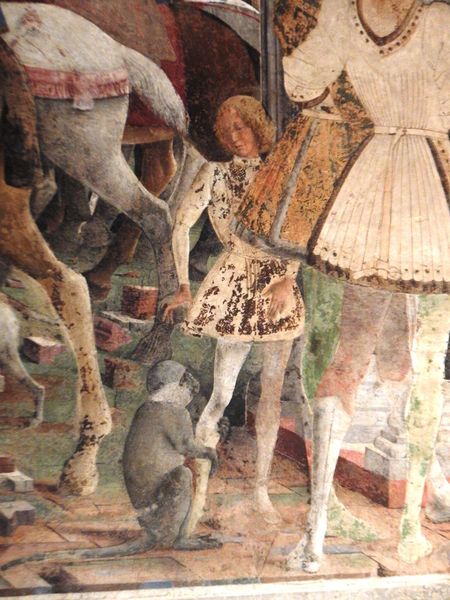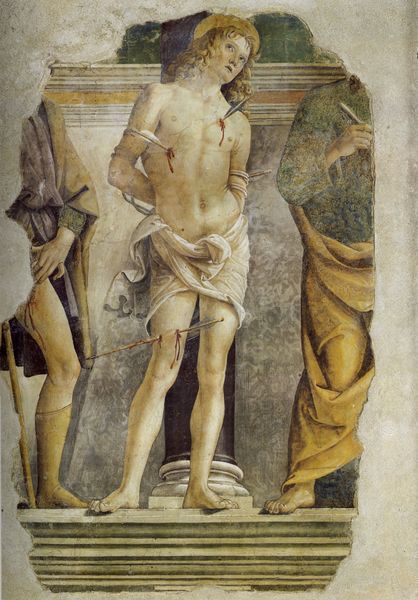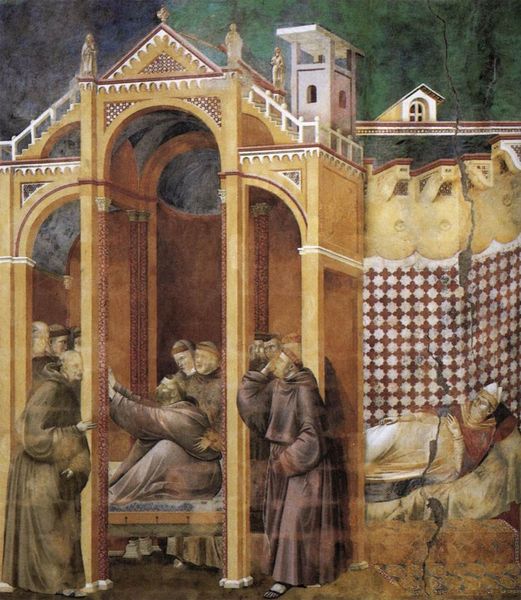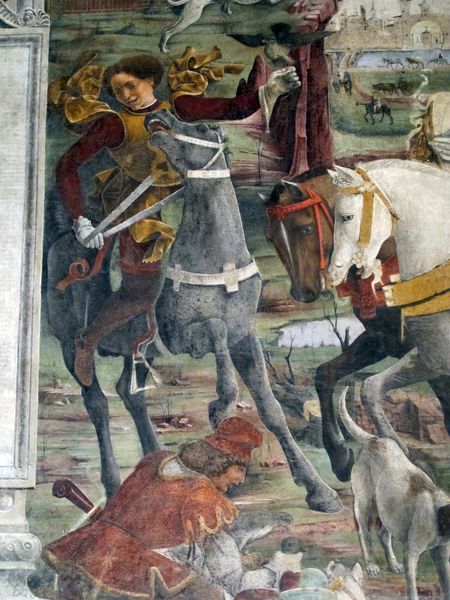
fresco
#
portrait
#
narrative-art
#
fresco
#
genre-painting
#
italian-renaissance
Copyright: Public domain
Curator: Here we have a detail from Francesco del Cossa’s fresco “April” completed around 1470, part of a larger series within the Palazzo Schifanoia in Ferrara. It's a bustling scene of courtly life and allegorical imagery typical of Renaissance art. What strikes you most when you first look at it? Editor: Immediately, it’s the pale palette that dominates. The figures seem almost bleached out against the aged backdrop, lending the fresco a certain ghostly elegance. Also, I’m drawn to the intricate positioning of figures; they’re tightly arranged, almost overlapping. Curator: Absolutely, and the faded color scheme is partially a consequence of age, but also likely intentional, reflecting the aesthetic preferences of the Ferrarese court. The Palazzo Schifanoia itself was commissioned by the ruling Este family, whose power and influence were subtly woven into the very fabric of these frescoes. Think about the role of art as a display of ducal patronage during this era. Editor: And it’s fascinating how the artist has created this tension between detailed realism and more symbolic elements. The careful rendering of textures—the fabrics, the figures' hair—contrasts so strikingly with the flatness of the backdrop and somewhat odd modeling of bodies. Curator: The "Month of April" was associated with Venus, goddess of love, spring, and fertility. The ruling families saw themselves as aligned with virtues like these, and artists were tasked with constructing visual narratives that legitimized their status. Notice the inclusion of astrological symbols above the activities on Earth. These paintings operated as more than just decoration, and rather a demonstration of the rulers' worldly and celestial alignment. Editor: So, looking closer at that lone figure in the red cap—the way his legs dangle precariously, there's something playful about his attitude that contrasts sharply with all that weighty symbolism you mention. He has this curious mix of casualness with very intentional poise. It pulls me into wanting to know the hidden symbols embedded in these postures. Curator: I see what you mean; there is almost a deliberate tension between informality and courtly display. Artists like del Cossa were adept at encoding such visual complexities for audiences versed in court culture. This was art that demanded to be read, decoded by learned viewers of the time. Editor: Considering how we view this detail isolated from its original context, in an audio tour for a museum now, highlights how much meaning can shift across centuries, yet still speak to something profound. It reminds me how an artist manages the complex role of observer and documentarian. Curator: Precisely, what survives across history is the complex tension between the artist, subject, and intended audience.
Comments
No comments
Be the first to comment and join the conversation on the ultimate creative platform.
